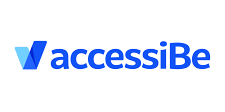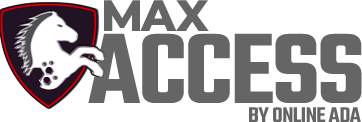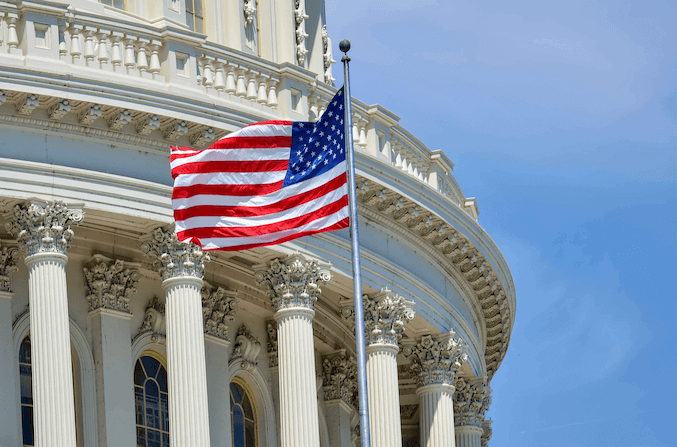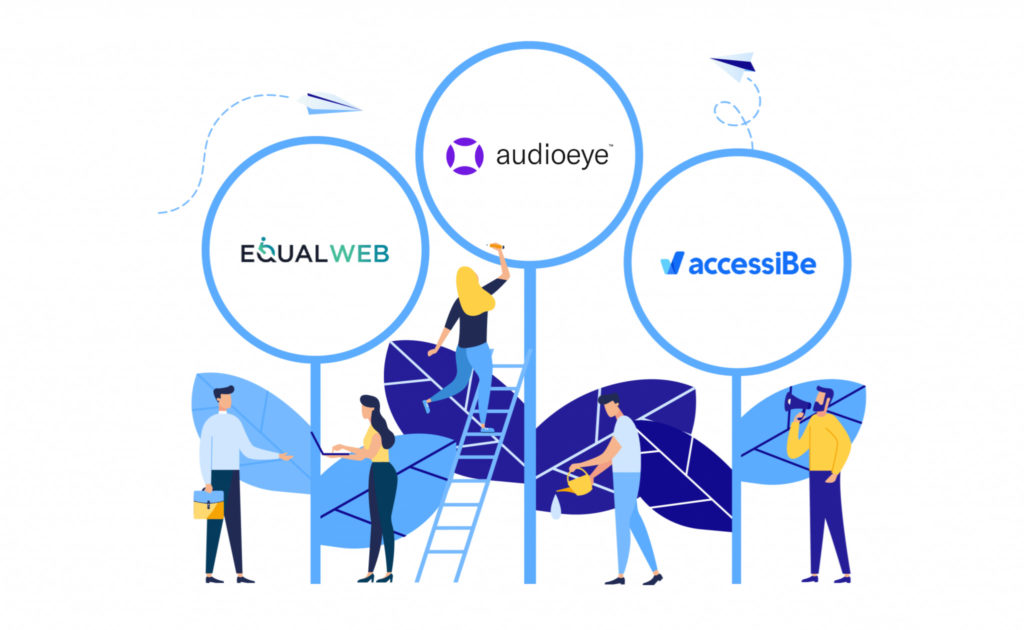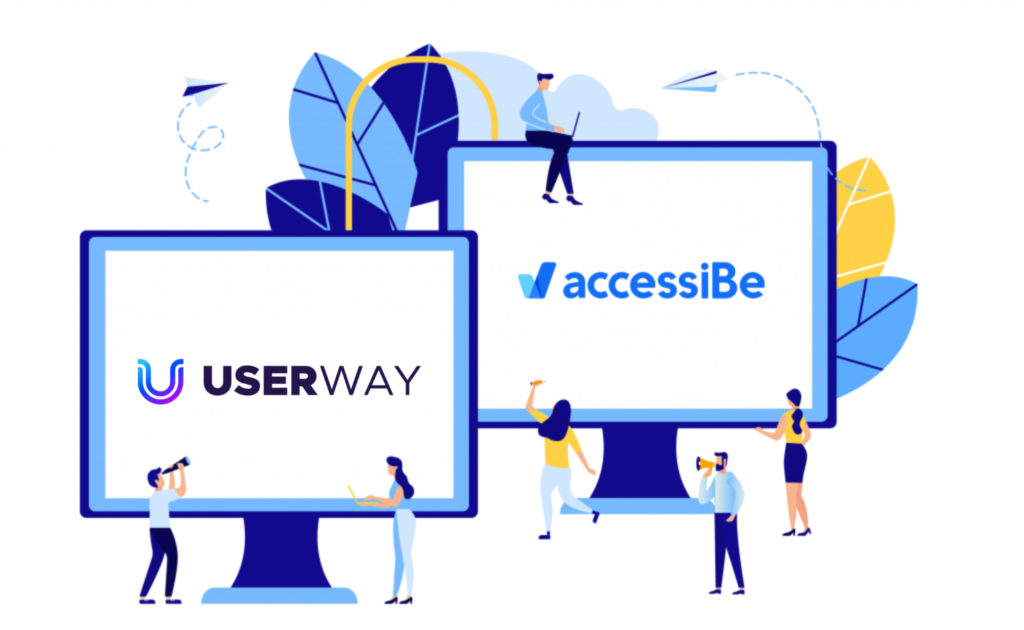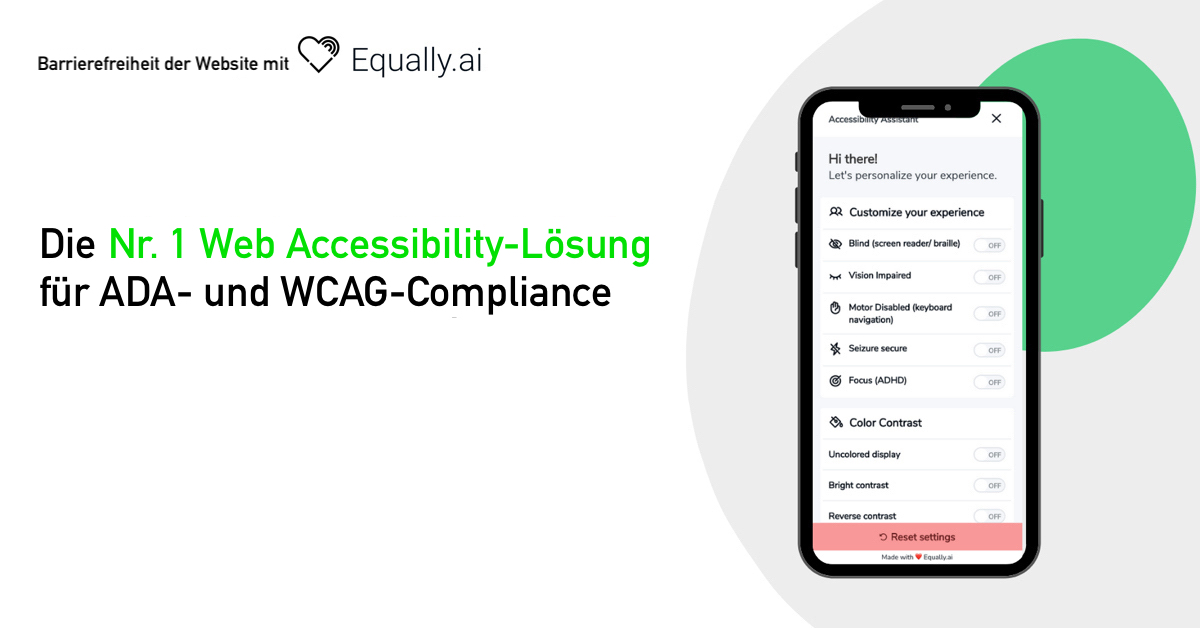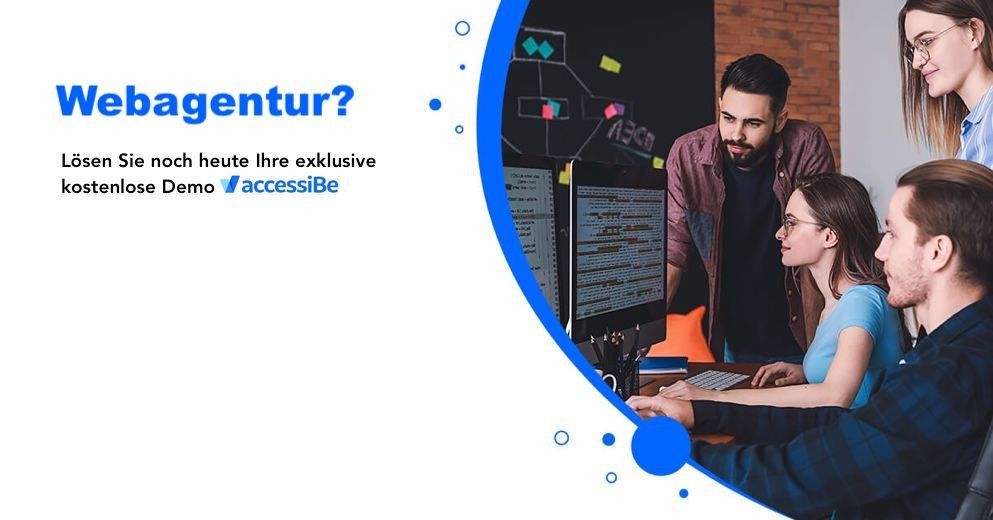
European Standard EN 301 549
Governments all over the world are beginning to recognize the importance of online accessibility. In today’s digital world, we cannot exist without internet connectivity, full internet access for Europeans across Europe is an excellent example of this movement. In all areas of life, education, hospitality, health care, politics, web compliance is going to have a more significant influence. The EU Commission, “A Europe Fit for the Digital Age“, is responsible for the part the digital world plays in the lives of Europeans. At the end of September 2020, this organization has made it mandatory for all public sector websites in Europe to be completely accessible. A new set of guidelines is the European Standard EN 301 549 compliance in an attempt to enhance digital accessibility in this part of the world.
Unternehmen und Websitebesitzer sollten die Aktualisierungen der Konformitätsanforderungen nach EN 301 549 einhalten, um ihren Webinhalt und ihre Informationstechnologie für Menschen mit bestimmten Behinderungen zugänglicher zu machen. The EN 301 549 standard is actively in use ever since the EU Directive on the Accessibility of Web Sites and Mobile Applications published it in 2014. It contains the requirements necessary for suiting the needs of people with all kinds of disabilities. These disabilities can be visual, audio, cognitive and mobility related.
Benefits for those that comply with the standard are numerous; their products and services become accessible to a broader audience, and no legal charges can be enforced. On the other hand, it also helps in bringing the content and technology closer to users with special needs. Learn all about the details and updates in the standards by scrolling down, as being informed about the EN 301 549 is crucial for businesses and site owners. The compliance is regulated by the CEN, CENELEC, and ETSI standardization groups, but let’s first go over the updates before getting to regulations.
History of the European EN 301 549 compliance requirements updates
The EN 301 549 section is a result of the joined effort of the three standardization groups to make the information and communication technology publicly reachable. The three founding organization are The European Committee for Electrotechnical Standardization (CENELEC), the European Telecommunications Standards Institute (ETSI), and the European Committee for Standardization (CEN). Since its first approval by the EU in 2014, the regulation was continuously updated.
New guidelines are added to improve the reach of the regulations and affect a bigger group. EU authorized country governments to apply the EN 301 549 compliance in law. The goal is to make the list of guidelines obligatory for every public entity and make the content equally accessible for everyone. Even some countries outside the EU offer their variant of these regulations as the importance of this matter is growing worldwide.
Every year there are new updates of EN 301 549 compliance regulations, and until now, three versions of the standard were active. Perhaps the second variant was the most influential as version 2.1 of EN 301 549 compliance included the WCAG reference. We’ll explain all about these guidelines in a bit, shortly after taking a look at some standard application deadlines.
Latest additions to the regulatory guidelines
There had been several crucial new guidelines improvements in 2020, most of which are focused on providing better service for those with disabilities. Among the additions, the crucial attention is on the group of users with learning and cognitive difficulties. The focus is to make the content clearer and easier to follow, without using aggressive designs.
Moreover, the European Information and Communication Technology are more accessible for users with low vision capabilities. Another great thing is that mobile device issues are also addressed in this matter, making the content on mobile platforms more suitable for overall needs. Furthermore, each set of standards get a deadline upon which it becomes legally active for EU states:
- Each of the websites created after September 2019 is to comply with the current standards at a particular moment.
- All existing and new public websites should comply with the standards since the end of September 2020
- When it comes to mobile apps in the public sector, every new and existing app should comply by the end of June 2021
Marks of a digital age in Europe
The updates of the European EN 301 549 compliance regulations are some of the visible signs of a new digital age. Digital content and information and communication technology truly unite the world, and numerous achievements in the last ten years contributed to current digitalization. Steps were taken to ensure the free flow of unprotected information, and the data security level is raised. The awareness of spreading digital accessibility is raised through all kinds of promotions of ideas. All users can easily find relevant data regarding new regulations online.
Courses are also organized by the Commission and W3C that cover the subject of creating a digitally accessible environment. A significant amount of information is available, including that on creating accessible apps and sites, as well as making the experience equal for everyone. The Web Accessibility Directive and all the efforts put into developing the current EN 301 549 standards can benefit from raising awareness through training. International experts are involved in the training process for the best educational results.
European Commission is thoroughly overseeing the law regulations and legal aspects of the directive and the compliance. Entities can benefit the most from specific disability categories of the application of the standard, so stick around for relevant details.
Specific areas of European EN 301 549 compliance coverage
The European Commission and standardization groups involved in regulating the EN 301 549 compliance included specific sectors for spreading web accessibility. Therefore, there are several important notices based on disability types with specific regulations that entities should comply with:
- Audio– There are several tools for users with limited hearing that entities can use to improve digital accessibility. Among those tools, the crucial ones to use are reduction of background noise, enhancement of audio clarity, better-adjusted frequency.
There’s also the possibility to use assistive listening devices with noise cancelation.
- Visual – The updates of EN 301 549 compliance requirements involve using assistive tools for usage without visual perception.
Usage of color-coded aspects and visual enhancement elements are the main focus of these measures.
- Physical – The EN 301 549 compliance updates include an assistive using interface for those with insufficient strength to operate regularly.
Alternative methods are used, including speech controls and one-handed operations to help users with these issues.
- Cognitive and neurological– For suiting the needs of those with cognitive issues, the EN 301 549 standard includes specific organized suggestions and focus spots. To address this kind of disability, the standard includes protocols with steps that are easy to follow.
- Speech – When it comes to speech disabilities, compliance tackles this issue as well. Implementation of tools, including touchable interfaces and keyboards as well as other vocal signals, is required to aid in this cause.
Besides these reasons, the standards should also be respected because of the legal consequences awaiting those that disrespect or fail to apply them.
Industries featuring the significance of the European EN 301 549 compliance
The compliance serves numerous industries and brings the consumers closer to products offered by different branches. Not only does compliance unite the world in terms of equal Web Accessibility and Digital Accessibility, but it also improves businesses.
Government sitesare easier to follow and navigate through thanks to the implementation of EN 301 549 regulations.
In the same manner, users can easily approach the healthcareindustry. As for educationalpurposes, compliance is widely used on various educational web content. One of the main benefits of compliance is that it provides an equal approach to educational content for persons of all capabilities.
Financial servicesare also using simplified solutions and invest significant efforts into developing greater bonds with customers with disabilities.
Hospitality services are another instance of the affected industry since the solutions are implemented in major hospitality sites.
Having in mind that the EN 301 549 compliance will fully be legally enforced by the end of 2021, businesses and entities can avoid lawsuits by complying. Legal charges won’t be pressed if a target respects a form of these standards while businesses additionally adapt their content for a broad public. Still, there are various ways of implementing the EN 301 549 standards, from courses to educational web content and implementation of respective tools.
Countries relying on updates of EN 301 549 compliance regulations
Although the European EN 301 549 compliance is primarily focused on countries of the EU, similar regulations are seen elsewhere.
EU countries are obligated to include a variant of EN 301 549 compliance into their law. Regulations are regularly updated with additions to help the system serve better.
Furthermore, the UK and Australia have also implemented a similar variant of Digital accessibility regulations.
Not long after the EN 301 549 compliance was implemented; numerous governments worldwide gave their best to develop similar regulations.
Implementation of WCAG in solutions
The Web Content Accessibility guidelines are guidelines provided by the W3C. They are part of the European EN 301 549 compliance. In that light, it’s crucial to state the great importance of WCAG for the age of digital equity. Major Web content solution providers include the WCAG guidelines in their methods. Companies like eSSENTIAL, Online ADA, AKEA WEB, and many others involve the WCAG variants.
These and many more providers offer their services to web sites and online content publishers in need of such solutions. The importance of EN 301 549 standard and WCAG implemented are crucial for all the companies mentioned. There are several other renowned providers besides the previously listed ones that use WCAG:
- Hike Orders
- Make Sense
- Adally
- Criterion 508
- Compliance Sheriff
However, WCAG guidelines often get updated with new items, so make sure to know all the news and regulations added.
Latest WCAG News
The new variant called WCAG 2.1 includes various guidelines that are implemented in the European EN 301 549 compliance. Out of the significant regulations, the main focus of the guidelines is to provide an alternative for every group of users with disabilities.
Large print and braille are some of the methods used, while speech and symbol language elements enhance effectiveness. The key is put on making the keyboard a sole controller. Users can achieve all the necessary functions by using the keyboard, while more time is given to read and understand the content. Web pages are advised to operate in a predictable way and without any designs that could trigger panic attacks for users. Another piece of advice is to make the Web content robust enough for all types of using entities.
Ever since 2012, the WCAG 2.0 is accepted as the ISO Standard by the International Organization for Standardization. Back in the day when the first variant of EN 301 549 compliance was set in use, the WCAG guidelines were implemented.
As of 2018, the WCAG 2.1 is in use, featuring improved guidelines for Digital accessibility equity. Variant 2.2 is currently under development, while we can expect all the changes in guidelines to be added as updates of EN 301 549 compliance requirements.
Ultimately, the EN 301 549 compliance is uniquely beneficial for EU countries for many reasons. Whether it’s making the content optimized for people of all capabilities, spreading the business reach, or sticking to legal obligations and avoiding lawsuits, advantages are many. The importance of these methods is clearly shown by the fact that countries outside Europe develop their variants of the standard, therefore expressing the full value of EN 301 549.

